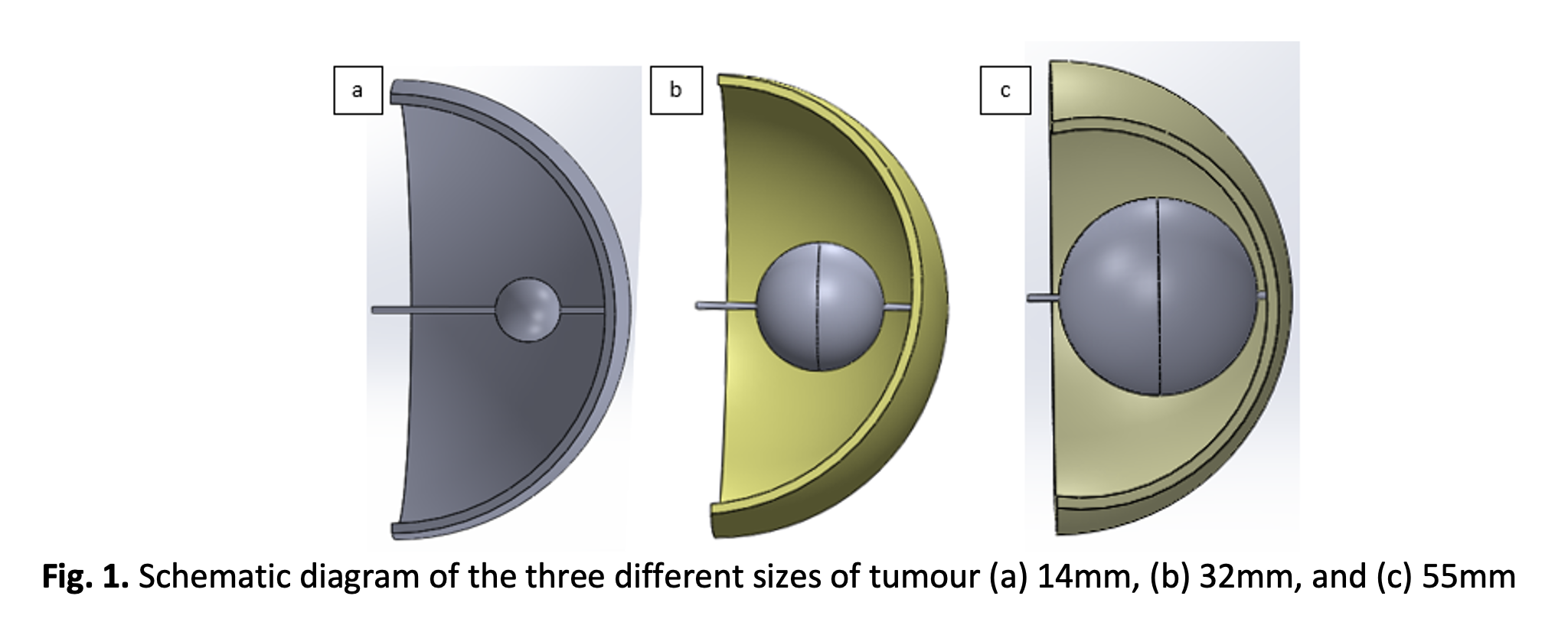Comparison of Heat Propagation Properties in Different Sizes of Malignant Breast Tumours using Computational Fluid Dynamics
DOI:
https://doi.org/10.37934/araset.28.3.368375Keywords:
Breast tumor, hyperthermia, computational fluid dynamic, infraredAbstract
Breast cancer is one of the leading critical illnesses in Malaysia. Typically, patients would undergo a lumpectomy or mastectomy followed by chemotherapy and radiotherapy. However, these treatments have side effects that impact the quality of life. Hyperthermia is a treatment that can kill the tumour with less effect on the other parts of the body. From previous findings, heating the body to a temperature of 40°C to 46°C is an alternative procedure to reduce the side effect of these treatments. This study aims to investigate heat propagation into malignant tumours of different sizes. Three different models of breast tumours with different sizes were modelled. The heat propagation was simulated using the computational fluid dynamic (CFD) method. Three different temperatures were applied to the malignant tumours exposed to infrared and thermocouple heat sources. From the observation, model 14mm demonstrated the highest temperature propagation as compared to the others. The heat propagation in the blood vessel also showed a significant radiation effect as shown in the tumour. However, the velocity and pressure in the blood vessel have no significant changes for all models. In conclusion, the heat propagation via infrared sources managed to penetrate the tumours and the early stage of the tumour experienced better heat propagation as compared to thermocouples.Downloads
Download data is not yet available.

Downloads
Published
2022-11-30
Issue
Section
Articles



























